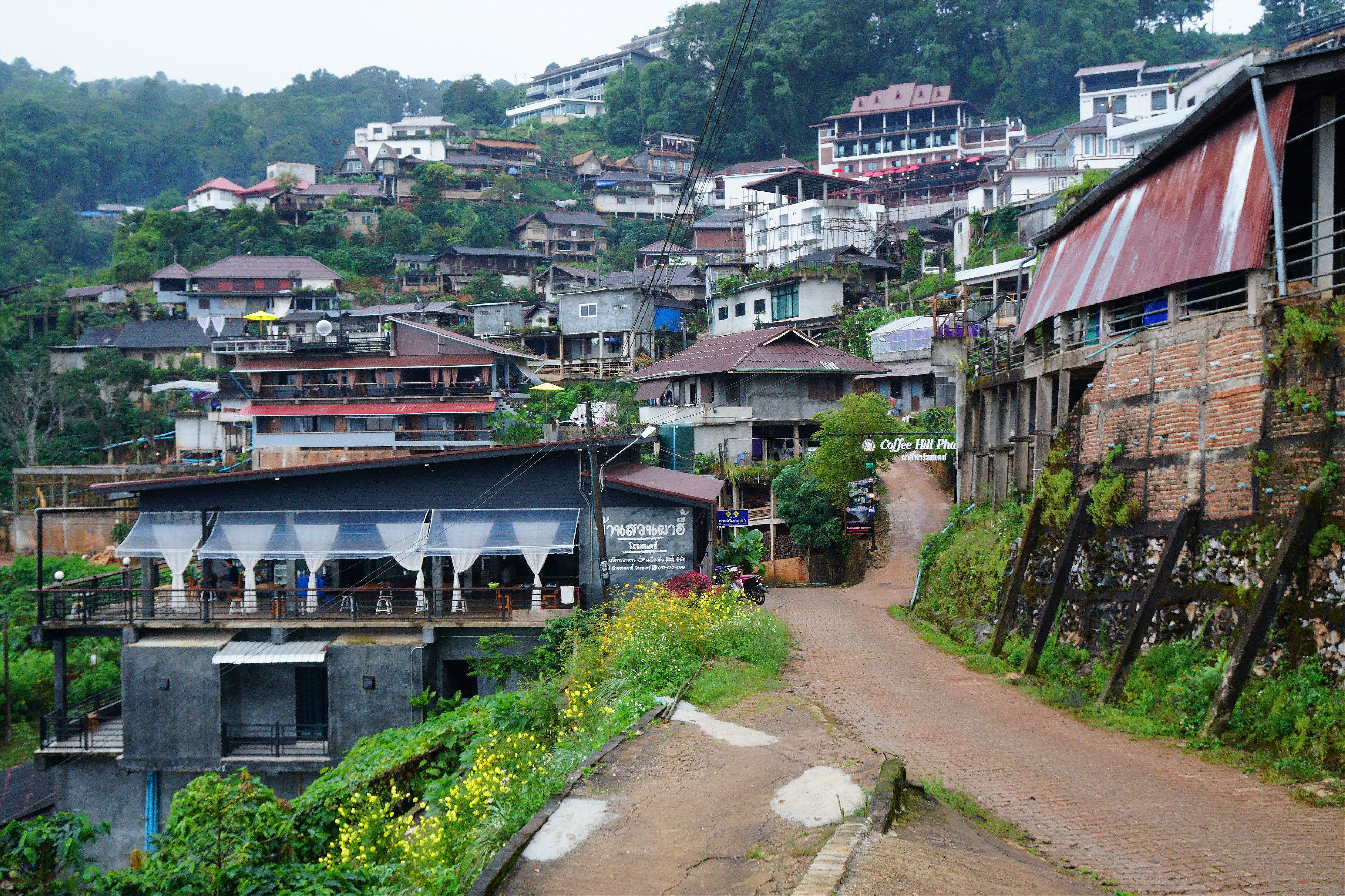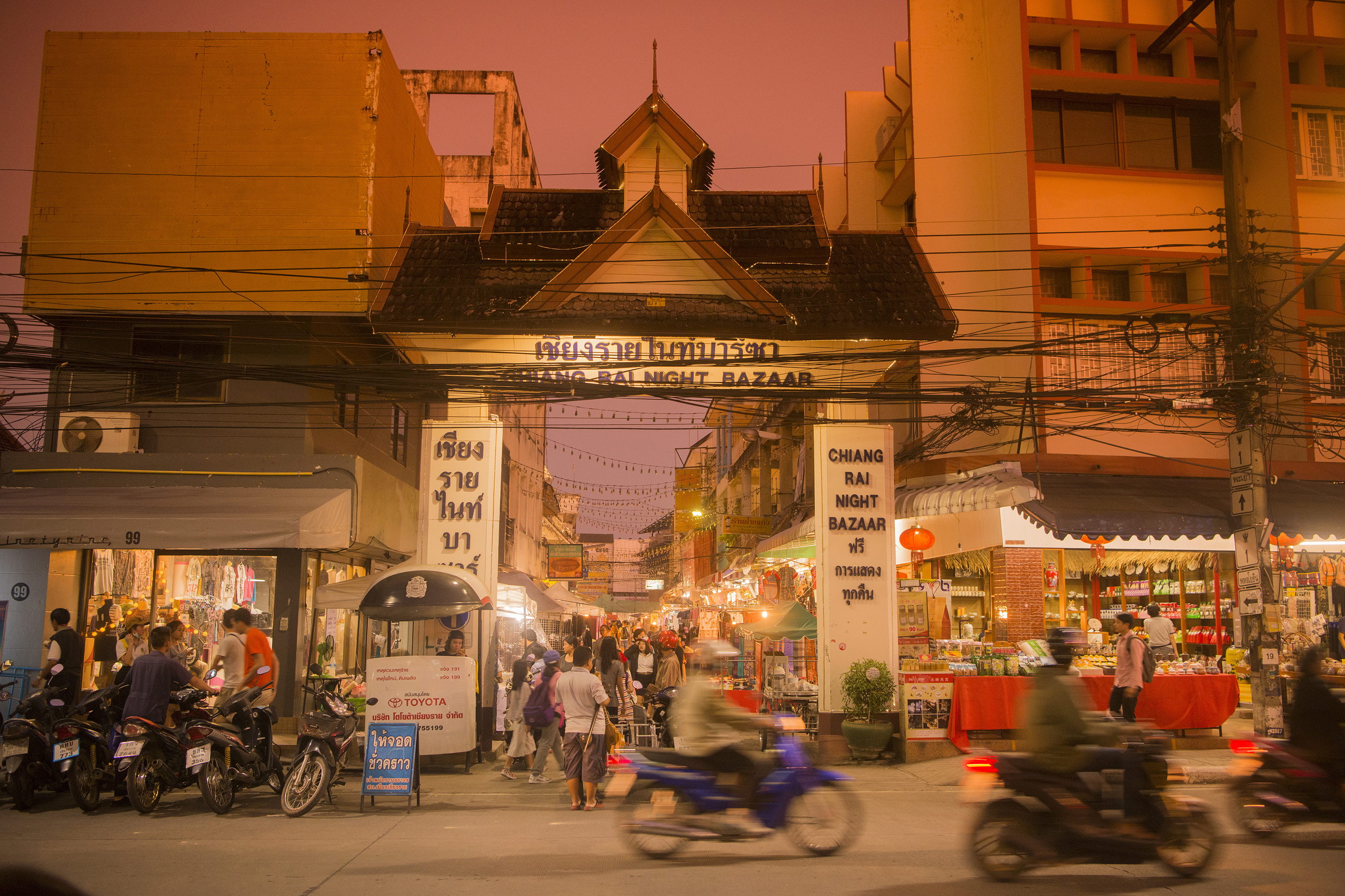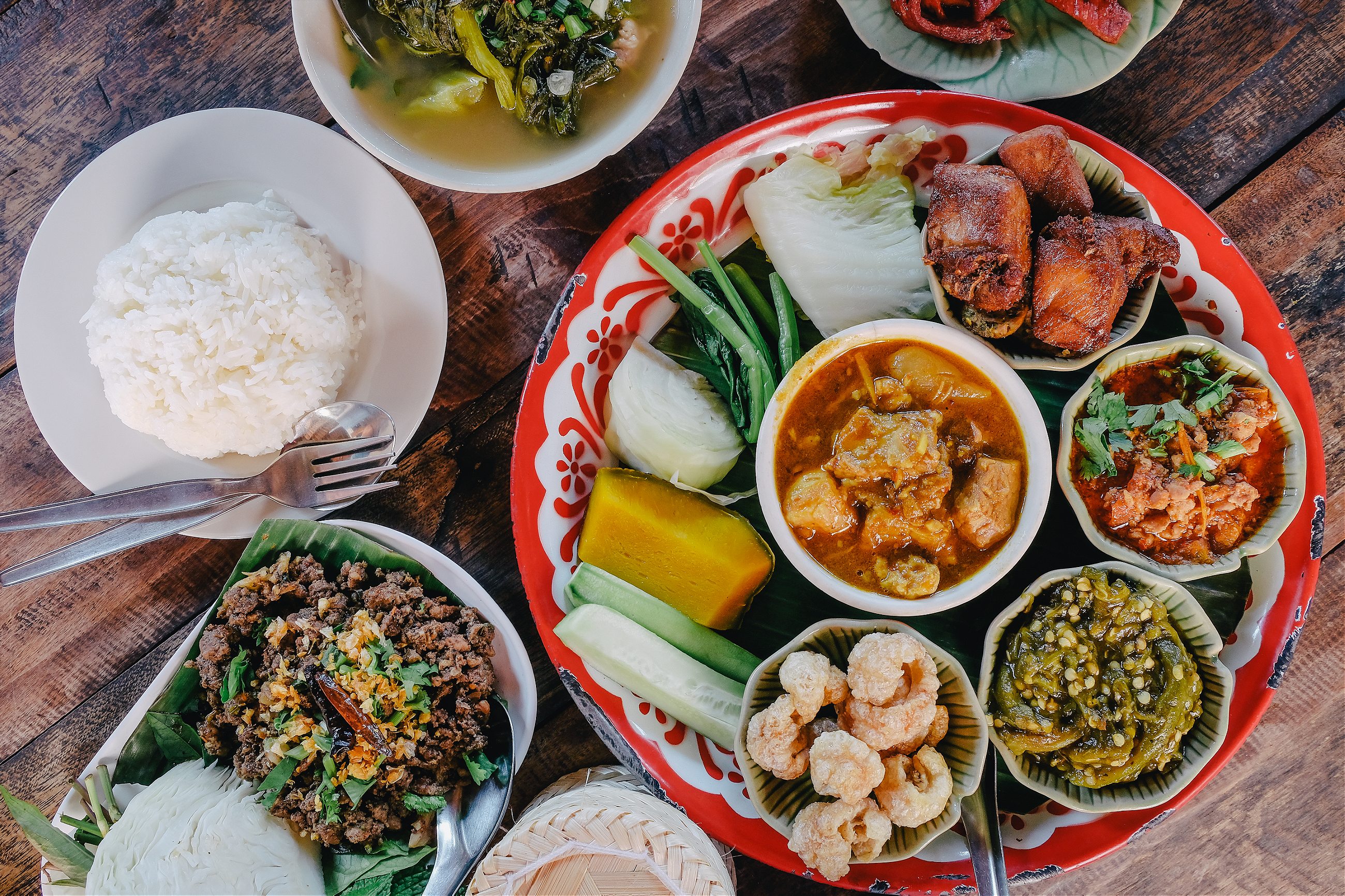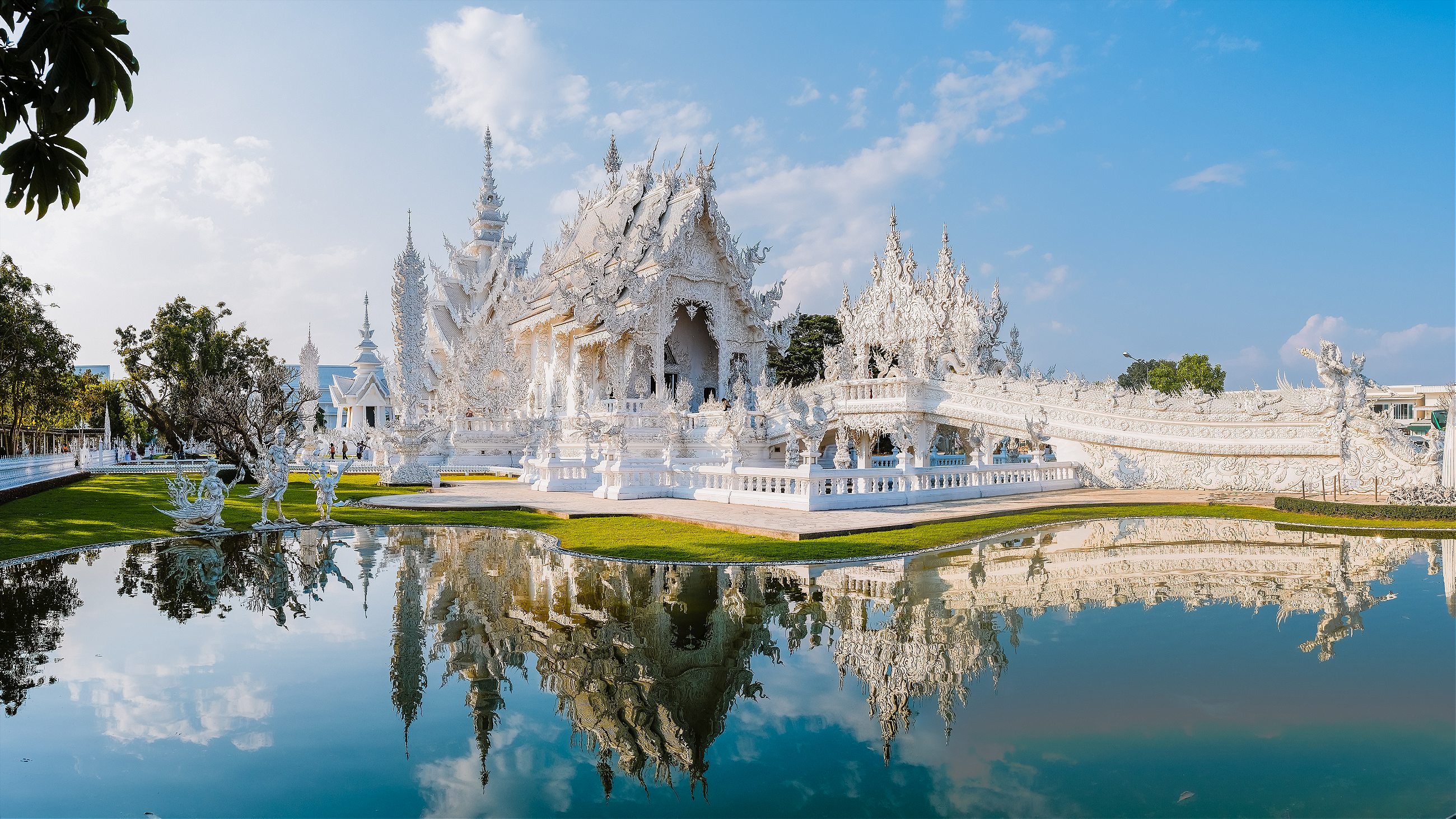The beer is cheap and the larb is fresh, but Chiang Rai is more than all that. These 10 bits of local wisdom will help get you started.
The northernmost major city in Thailand, Chiang Rai lies between two mountain ranges on the Kok River plain southwest of the border with Laos and Myanmar. Older and quieter than its bustling neighbor Chiang Mai, both the city and Chiang Rai province at large offer a gateway to authentic northern culture and cuisine, from the mist-covered rice fields and mountain villages of Doi Mae Salong to the Buddhist temples and steaming food stalls of the capital district. The beer is cheap and the larb is fresh, but Chiang Rai is more than all that. Expect riverside craft cocktails, experimental fine dining and a happening contemporary art scene. These 10 bits of local wisdom will help get you started.

Chiang Rai is not Chiang Mai. Though they border each other and their names differ by only one character, the two cities are distinct. Travelers who love the buzzy atmosphere of Chiang Mai can’t expect the same from Chiang Rai. But the sleepier vibe is its charm:in Chiang Rai you can experience northern culture and explore mountainous surroundings without worrying about teeming crowds and raucous nightlife. Nowadays, nice eateries, interesting cafes, and delicious street stalls are part of Chiang Rai’s scene. However, most are located among homes and local businesses. Even the busiest part of the city is still far from the high energy of Bangkok or Chiang Mai.


Coming from the south? Skip the train, jump on a plane. The overnight train from Bangkok to the north is known for its scenic route. The beauty may compensate for the long traveling time if you’re just riding the13 hours from Bangkok to Chiang Mai, but it’s another five hours by car to Chiang Rai. That means you’ll spend almost a full day traveling, while the flight takes less than two hours. You could fly from Chiang Mai to Chiang Rai, but you’ll likely pay almost the same price as flights from Bangkok. So make it easy on yourself and skip the train ride. Regularly running buses and vans are available for those already in Chiang Mai looking for a different vibe.

Carry cash. Credit cards are accepted at some restaurants and bars but not in most places here. Plus, many charge an extra 3 percent for credit card payments, and minimum spending is required. Therefore, carrying cash is the best way to enjoy the city.


Download the Grab app. This post isn’t sponsored by Grab. But trust us, it’s a lifesaver if you don’t rent a car. Combining taxis and home cars, the app’s JustGrab service is the quickest way to travel in Amphoe Muang Chiang Rai, the city’s capital district. And forget about the crazily high fares in Bangkok, where every distance seems to start at 100 baht; the Grab fares here are much more reasonable.
You can also use Grab to travel beyond the city to other parts of Chiang Rai province. However, be sure to arrange for the driver to pick you up, because getting Grab from other parts of the province is extremely difficult. Many Grab and taxi drivers are open to advance booking, so don’t hesitate to plan ahead. Tuk Tuks are also available in the city if you want to enjoy the ride and are comfortable with negotiating fares.

Just eat. While JustGrab is a recommended travel option, the suggestion for food is to just eat. Honestly, most Thai people can’t tell the difference between Chiang Rai and other provinces in the northern part right away. The items are the same—khao soi (northern Thai curry noodle soup), sai au (northern Thai sausage), nam ngiao (spicy noodle soup), larb kua (spicy meat salad), and other familiar names can be found here.
However, the food here is unique due to its less touristic nature; restaurants and food stalls generally don’t cater to Bangkok people or foreign tourists. The differences lie in the types of local herbs and vegetables used in each dish. Feel free to randomly try food vendors (well, maybe not at Chiang Rai Night Bazaar); you’ll likely get authentic Chiang Rai cuisine without needing to search for it.


(Almost) day drink. While bars in Bangkok open their doors at 6 p.m. or 7 p.m., bars in Chiang Rai don’t wait until that late. Many bars open at 4 p.m., but they close early, too. Most serve their last drinks before midnight. Beers are cheap—drinking morethan 500 baht worth is a challenge, not to mention a health hazard. But if you crave craft cocktails, there are a few hidden gems,Including Le Méridien Chiang Rai Resort on the Kok riverside, an enchanting spot to esip artisanal cocktails with a view. If you’re not ready to end your night, consider heading to one of Chiang Rai’s clutch of karaoke bars, where you can sing and drink until (almost) breakfast.


Try a modern take. When done well, modernity isn’t an enemy of authentic Thai culture. During the past few years, Chiang Rai has become a new destination for up-and-coming chefs and mixologists who want to put a modern twist on northern Thailand’s distinct flavors. Locus Food Lab is considered a pioneer in this movement. This fine-dining establishment uses local ingredients to emphasize local wisdom. Some new places, including Vinyl & Wine, offer northern cuisine-inspired dishes among their Western choices. Compared to Chiang Mai, in terms of the number of places, Chiang Rai is still at its beginning stage. However, there’s no doubt the city has enticing prospects.

Visiting tourist spots can be a colorful activity, literally. The White Temple, or Wat Rong Khun, is probably the most famous temple in this city. The place is known for its white monochrome, which was delicately designed and crafted by Thailand’s national artist Chalermchai Kositpipat. Another notable temple is the Blue Temple, or Wat Rong Suea Ten. As the name suggests, the temple is ensconced in vivid cerulean blue with gold embellishments. To complete Chiang Rai’s Pantone list, check out the Baan Dam Museum, or Black House Museum, a private art complex designed byThawan Duchanee, one of Thailand’s most celebrated contemporary artists.


Take a contemporary art crawl. To call Chiang Rai a new art destination would not be quite right. The city has a long history of art and culture, especially the Lanna culture, which continues to influence its character. Chiang Rai recently made a mark on the country’s art scene by hosting the Thailand Biennale in 2023. The event revealed how Chiang Rai could potentially be a new must-visit arts destination. Pro tip: don’t expect a walkable arts district like New York’s Chelsea—most art locations are far from one another.

Answer nature’s call. Get out of the city. Chiang Rai is nestled among lush dois, or mountains, making it a top destination for Thai tourists. The most visited mountains include Doi Mae Salong and Phu Chi Fa. October through February are the best months to experience the sea of fog and indulge in Thailand’s short winter season.
In order to avoid painful traffic and crowded tourist areas, check the local calendar before planning your trip. Weekdays might be a better option than long weekends.
